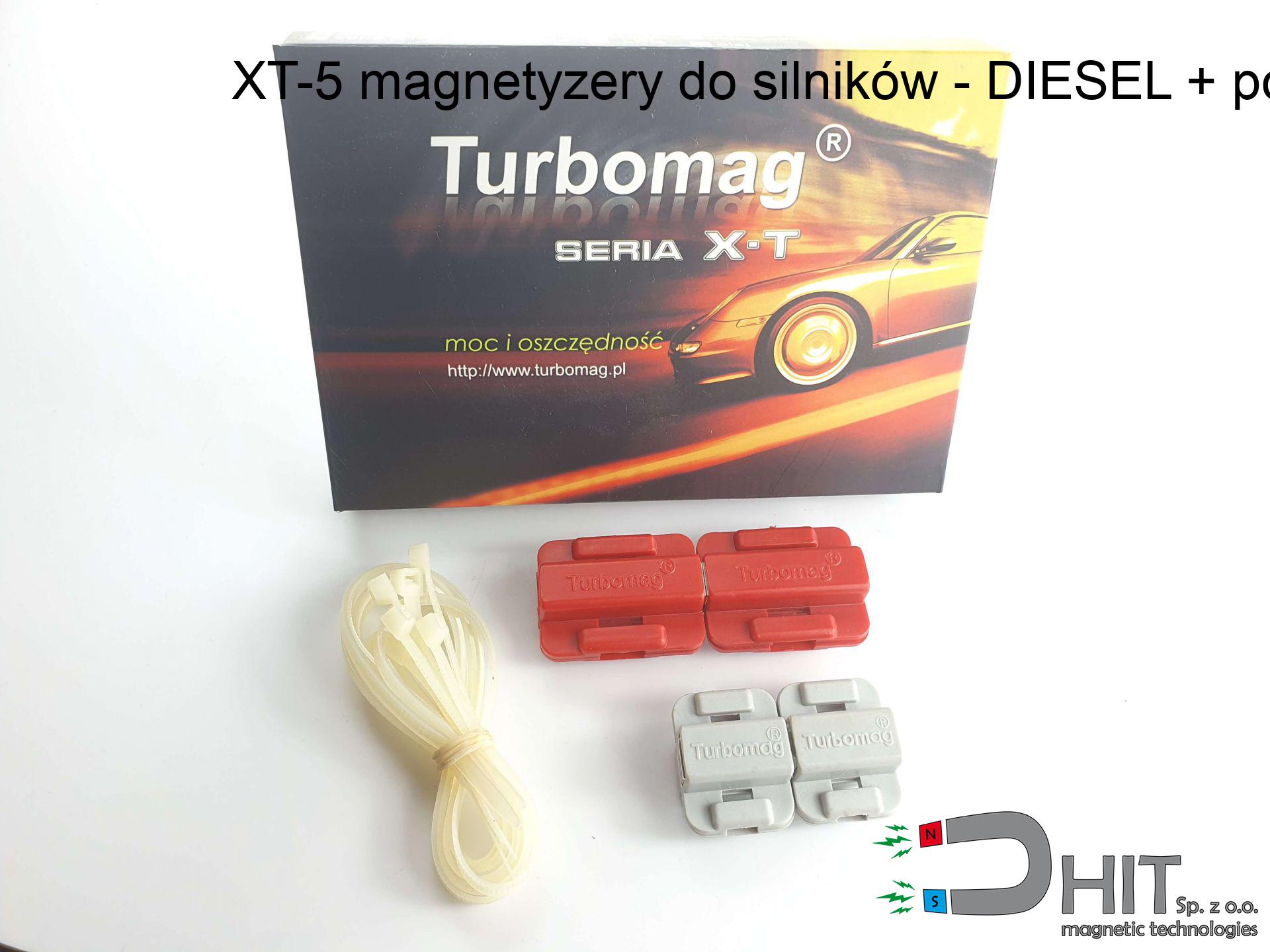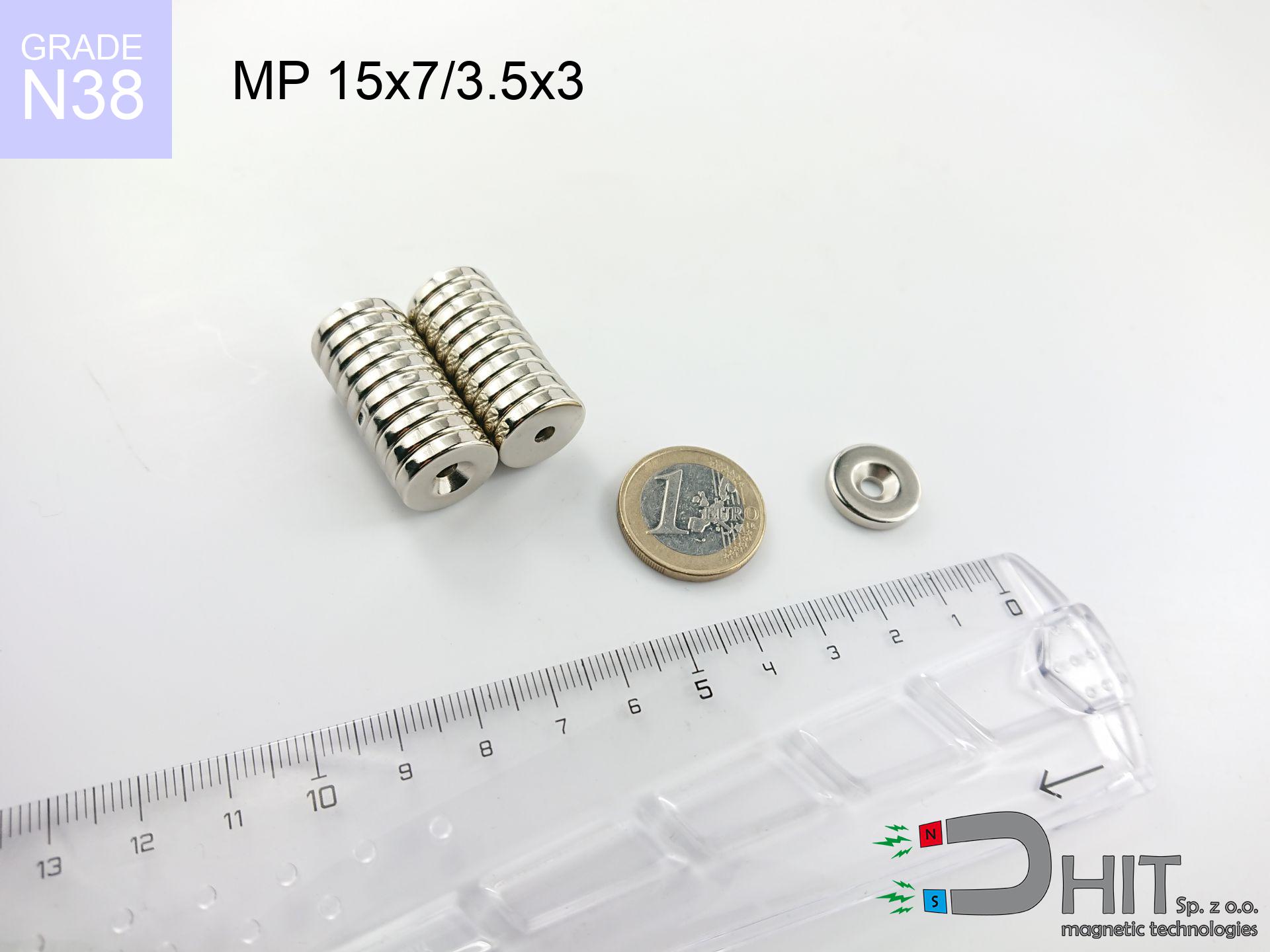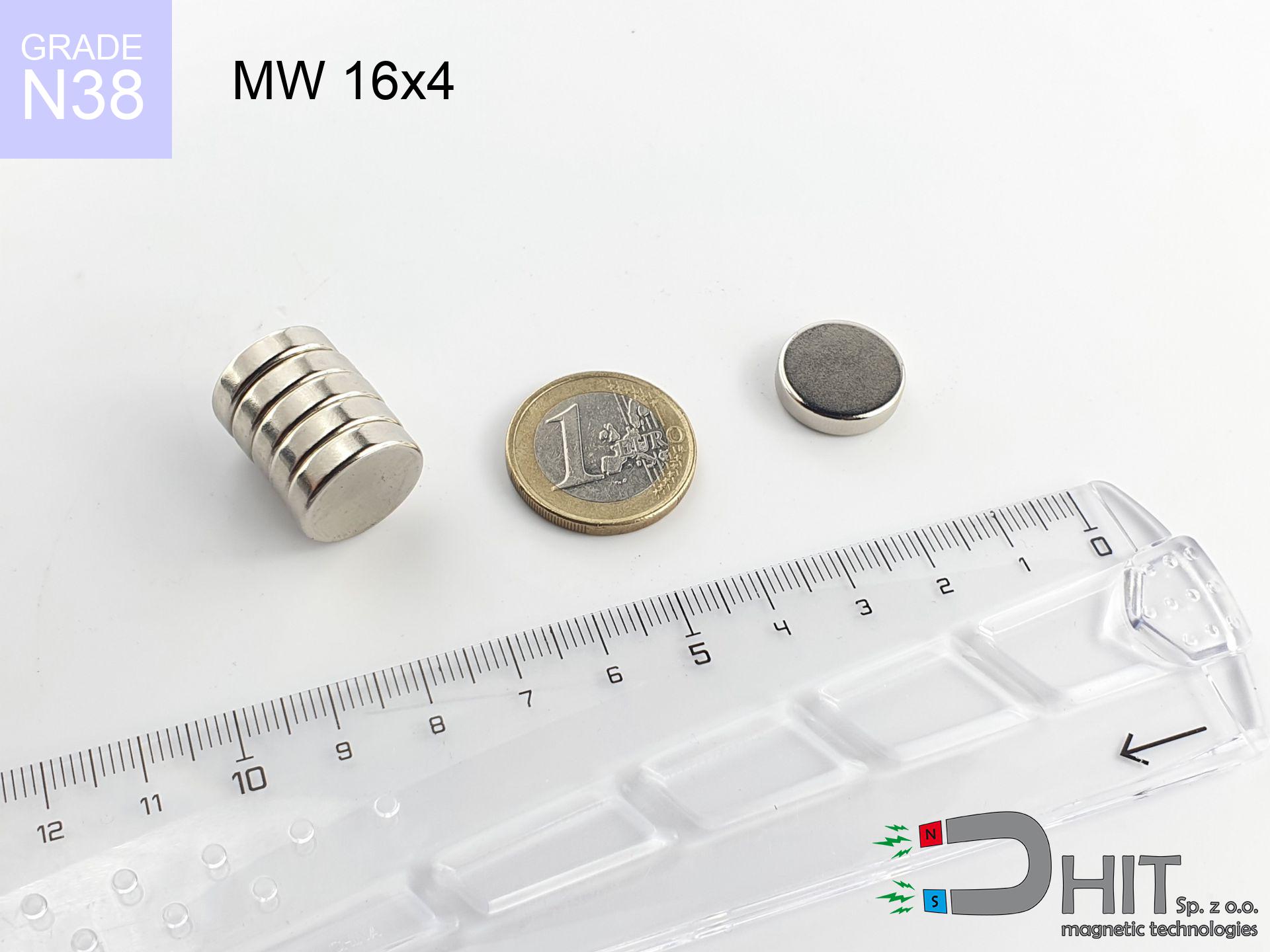MPL 40x10x5x2[7/3.5] / N38 - lamellar magnet
lamellar magnet
Catalog no 020397
GTIN/EAN: 5906301811909
length
40 mm [±0,1 mm]
Width
10 mm [±0,1 mm]
Height
5 mm [±0,1 mm]
Weight
15 g
Magnetization Direction
↑ axial
Load capacity
11.85 kg / 116.27 N
Magnetic Induction
321.37 mT / 3214 Gs
Coating
[NiCuNi] Nickel
9.93 ZŁ with VAT / pcs + price for transport
8.07 ZŁ net + 23% VAT / pcs
bulk discounts:
Need more?
Contact us by phone
+48 888 99 98 98
if you prefer get in touch using
inquiry form
the contact form page.
Lifting power as well as shape of neodymium magnets can be verified using our
online calculation tool.
Same-day shipping for orders placed before 14:00.
Product card - MPL 40x10x5x2[7/3.5] / N38 - lamellar magnet
Specification / characteristics - MPL 40x10x5x2[7/3.5] / N38 - lamellar magnet
| properties | values |
|---|---|
| Cat. no. | 020397 |
| GTIN/EAN | 5906301811909 |
| Production/Distribution | Dhit sp. z o.o. |
| Country of origin | Poland / China / Germany |
| Customs code | 85059029 |
| length | 40 mm [±0,1 mm] |
| Width | 10 mm [±0,1 mm] |
| Height | 5 mm [±0,1 mm] |
| Weight | 15 g |
| Magnetization Direction | ↑ axial |
| Load capacity ~ ? | 11.85 kg / 116.27 N |
| Magnetic Induction ~ ? | 321.37 mT / 3214 Gs |
| Coating | [NiCuNi] Nickel |
| Manufacturing Tolerance | ±0.1 mm |
Magnetic properties of material N38
| properties | values | units |
|---|---|---|
| remenance Br [min. - max.] ? | 12.2-12.6 | kGs |
| remenance Br [min. - max.] ? | 1220-1260 | mT |
| coercivity bHc ? | 10.8-11.5 | kOe |
| coercivity bHc ? | 860-915 | kA/m |
| actual internal force iHc | ≥ 12 | kOe |
| actual internal force iHc | ≥ 955 | kA/m |
| energy density [min. - max.] ? | 36-38 | BH max MGOe |
| energy density [min. - max.] ? | 287-303 | BH max KJ/m |
| max. temperature ? | ≤ 80 | °C |
Physical properties of sintered neodymium magnets Nd2Fe14B at 20°C
| properties | values | units |
|---|---|---|
| Vickers hardness | ≥550 | Hv |
| Density | ≥7.4 | g/cm3 |
| Curie Temperature TC | 312 - 380 | °C |
| Curie Temperature TF | 593 - 716 | °F |
| Specific resistance | 150 | μΩ⋅cm |
| Bending strength | 250 | MPa |
| Compressive strength | 1000~1100 | MPa |
| Thermal expansion parallel (∥) to orientation (M) | (3-4) x 10-6 | °C-1 |
| Thermal expansion perpendicular (⊥) to orientation (M) | -(1-3) x 10-6 | °C-1 |
| Young's modulus | 1.7 x 104 | kg/mm² |
Engineering analysis of the assembly - report
The following information represent the result of a engineering simulation. Values rely on algorithms for the material Nd2Fe14B. Real-world conditions may differ. Treat these calculations as a supplementary guide for designers.
Table 1: Static pull force (pull vs distance) - interaction chart
MPL 40x10x5x2[7/3.5] / N38
| Distance (mm) | Induction (Gauss) / mT | Pull Force (kg) | Risk Status |
|---|---|---|---|
| 0 mm |
3212 Gs
321.2 mT
|
11.85 kg / 11850.0 g
116.2 N
|
critical level |
| 1 mm |
2791 Gs
279.1 mT
|
8.95 kg / 8947.7 g
87.8 N
|
strong |
| 2 mm |
2358 Gs
235.8 mT
|
6.38 kg / 6384.9 g
62.6 N
|
strong |
| 3 mm |
1965 Gs
196.5 mT
|
4.43 kg / 4432.4 g
43.5 N
|
strong |
| 5 mm |
1360 Gs
136.0 mT
|
2.12 kg / 2122.9 g
20.8 N
|
strong |
| 10 mm |
615 Gs
61.5 mT
|
0.43 kg / 434.1 g
4.3 N
|
weak grip |
| 15 mm |
329 Gs
32.9 mT
|
0.12 kg / 124.5 g
1.2 N
|
weak grip |
| 20 mm |
195 Gs
19.5 mT
|
0.04 kg / 43.9 g
0.4 N
|
weak grip |
| 30 mm |
83 Gs
8.3 mT
|
0.01 kg / 8.0 g
0.1 N
|
weak grip |
| 50 mm |
24 Gs
2.4 mT
|
0.00 kg / 0.6 g
0.0 N
|
weak grip |
Table 2: Slippage hold (vertical surface)
MPL 40x10x5x2[7/3.5] / N38
| Distance (mm) | Friction coefficient | Pull Force (kg) |
|---|---|---|
| 0 mm | Stal (~0.2) |
2.37 kg / 2370.0 g
23.2 N
|
| 1 mm | Stal (~0.2) |
1.79 kg / 1790.0 g
17.6 N
|
| 2 mm | Stal (~0.2) |
1.28 kg / 1276.0 g
12.5 N
|
| 3 mm | Stal (~0.2) |
0.89 kg / 886.0 g
8.7 N
|
| 5 mm | Stal (~0.2) |
0.42 kg / 424.0 g
4.2 N
|
| 10 mm | Stal (~0.2) |
0.09 kg / 86.0 g
0.8 N
|
| 15 mm | Stal (~0.2) |
0.02 kg / 24.0 g
0.2 N
|
| 20 mm | Stal (~0.2) |
0.01 kg / 8.0 g
0.1 N
|
| 30 mm | Stal (~0.2) |
0.00 kg / 2.0 g
0.0 N
|
| 50 mm | Stal (~0.2) |
0.00 kg / 0.0 g
0.0 N
|
Table 3: Wall mounting (shearing) - vertical pull
MPL 40x10x5x2[7/3.5] / N38
| Surface type | Friction coefficient / % Mocy | Max load (kg) |
|---|---|---|
| Raw steel |
µ = 0.3
30% Nominalnej Siły
|
3.55 kg / 3555.0 g
34.9 N
|
| Painted steel (standard) |
µ = 0.2
20% Nominalnej Siły
|
2.37 kg / 2370.0 g
23.2 N
|
| Oily/slippery steel |
µ = 0.1
10% Nominalnej Siły
|
1.19 kg / 1185.0 g
11.6 N
|
| Magnet with anti-slip rubber |
µ = 0.5
50% Nominalnej Siły
|
5.93 kg / 5925.0 g
58.1 N
|
Table 4: Steel thickness (substrate influence) - sheet metal selection
MPL 40x10x5x2[7/3.5] / N38
| Steel thickness (mm) | % power | Real pull force (kg) |
|---|---|---|
| 0.5 mm |
|
0.59 kg / 592.5 g
5.8 N
|
| 1 mm |
|
1.48 kg / 1481.3 g
14.5 N
|
| 2 mm |
|
2.96 kg / 2962.5 g
29.1 N
|
| 5 mm |
|
7.41 kg / 7406.3 g
72.7 N
|
| 10 mm |
|
11.85 kg / 11850.0 g
116.2 N
|
Table 5: Thermal resistance (stability) - resistance threshold
MPL 40x10x5x2[7/3.5] / N38
| Ambient temp. (°C) | Power loss | Remaining pull | Status |
|---|---|---|---|
| 20 °C | 0.0% |
11.85 kg / 11850.0 g
116.2 N
|
OK |
| 40 °C | -2.2% |
11.59 kg / 11589.3 g
113.7 N
|
OK |
| 60 °C | -4.4% |
11.33 kg / 11328.6 g
111.1 N
|
|
| 80 °C | -6.6% |
11.07 kg / 11067.9 g
108.6 N
|
|
| 100 °C | -28.8% |
8.44 kg / 8437.2 g
82.8 N
|
Table 6: Two magnets (attraction) - forces in the system
MPL 40x10x5x2[7/3.5] / N38
| Gap (mm) | Attraction (kg) (N-S) | Repulsion (kg) (N-N) |
|---|---|---|
| 0 mm |
25.44 kg / 25444 g
249.6 N
4 569 Gs
|
N/A |
| 1 mm |
22.33 kg / 22326 g
219.0 N
6 018 Gs
|
20.09 kg / 20093 g
197.1 N
~0 Gs
|
| 2 mm |
19.21 kg / 19213 g
188.5 N
5 582 Gs
|
17.29 kg / 17291 g
169.6 N
~0 Gs
|
| 3 mm |
16.31 kg / 16311 g
160.0 N
5 144 Gs
|
14.68 kg / 14680 g
144.0 N
~0 Gs
|
| 5 mm |
11.45 kg / 11445 g
112.3 N
4 309 Gs
|
10.30 kg / 10301 g
101.0 N
~0 Gs
|
| 10 mm |
4.56 kg / 4558 g
44.7 N
2 719 Gs
|
4.10 kg / 4102 g
40.2 N
~0 Gs
|
| 20 mm |
0.93 kg / 932 g
9.1 N
1 230 Gs
|
0.84 kg / 839 g
8.2 N
~0 Gs
|
| 50 mm |
0.04 kg / 38 g
0.4 N
249 Gs
|
0.03 kg / 34 g
0.3 N
~0 Gs
|
Table 7: Protective zones (electronics) - warnings
MPL 40x10x5x2[7/3.5] / N38
| Object / Device | Limit (Gauss) / mT | Safe distance |
|---|---|---|
| Pacemaker | 5 Gs (0.5 mT) | 9.0 cm |
| Hearing aid | 10 Gs (1.0 mT) | 7.0 cm |
| Mechanical watch | 20 Gs (2.0 mT) | 5.5 cm |
| Mobile device | 40 Gs (4.0 mT) | 4.5 cm |
| Car key | 50 Gs (5.0 mT) | 4.0 cm |
| Payment card | 400 Gs (40.0 mT) | 1.5 cm |
| HDD hard drive | 600 Gs (60.0 mT) | 1.5 cm |
Table 8: Impact energy (cracking risk) - warning
MPL 40x10x5x2[7/3.5] / N38
| Start from (mm) | Speed (km/h) | Energy (J) | Predicted outcome |
|---|---|---|---|
| 10 mm |
28.99 km/h
(8.05 m/s)
|
0.49 J | |
| 30 mm |
49.12 km/h
(13.64 m/s)
|
1.40 J | |
| 50 mm |
63.39 km/h
(17.61 m/s)
|
2.33 J | |
| 100 mm |
89.64 km/h
(24.90 m/s)
|
4.65 J |
Table 9: Anti-corrosion coating durability
MPL 40x10x5x2[7/3.5] / N38
| Technical parameter | Value / Description |
|---|---|
| Coating type | [NiCuNi] Nickel |
| Layer structure | Nickel - Copper - Nickel |
| Layer thickness | 10-20 µm |
| Salt spray test (SST) ? | 24 h |
| Recommended environment | Indoors only (dry) |
Table 10: Electrical data (Flux)
MPL 40x10x5x2[7/3.5] / N38
| Parameter | Value | SI Unit / Description |
|---|---|---|
| Magnetic Flux | 11 419 Mx | 114.2 µWb |
| Pc Coefficient | 0.31 | Low (Flat) |
Table 11: Submerged application
MPL 40x10x5x2[7/3.5] / N38
| Environment | Effective steel pull | Effect |
|---|---|---|
| Air (land) | 11.85 kg | Standard |
| Water (riverbed) |
13.57 kg
(+1.72 kg Buoyancy gain)
|
+14.5% |
1. Shear force
*Note: On a vertical surface, the magnet holds just approx. 20-30% of its max power.
2. Steel thickness impact
*Thin steel (e.g. computer case) drastically reduces the holding force.
3. Thermal stability
*For N38 grade, the critical limit is 80°C.
4. Demagnetization curve and operating point (B-H)
chart generated for the permeance coefficient Pc (Permeance Coefficient) = 0.31
The chart above illustrates the magnetic characteristics of the material within the second quadrant of the hysteresis loop. The solid red line represents the demagnetization curve (material potential), while the dashed blue line is the load line based on the magnet's geometry. The Pc (Permeance Coefficient), also known as the load line slope, is a dimensionless value that describes the relationship between the magnet's shape and its magnetic stability. The intersection of these two lines (the black dot) is the operating point — it determines the actual magnetic flux density generated by the magnet in this specific configuration. A higher Pc value means the magnet is more 'slender' (tall relative to its area), resulting in a higher operating point and better resistance to irreversible demagnetization caused by external fields or temperature. A value of 0.42 is relatively low (typical for flat magnets), meaning the operating point is closer to the 'knee' of the curve — caution is advised when operating at temperatures near the maximum limit to avoid strength loss.
Material specification
| iron (Fe) | 64% – 68% |
| neodymium (Nd) | 29% – 32% |
| boron (B) | 1.1% – 1.2% |
| dysprosium (Dy) | 0.5% – 2.0% |
| coating (Ni-Cu-Ni) | < 0.05% |
Ecology and recycling (GPSR)
| recyclability (EoL) | 100% |
| recycled raw materials | ~10% (pre-cons) |
| carbon footprint | low / zredukowany |
| waste code (EWC) | 16 02 16 |
View more products
Strengths and weaknesses of Nd2Fe14B magnets.
Benefits
- They retain magnetic properties for almost 10 years – the drop is just ~1% (according to analyses),
- They retain their magnetic properties even under external field action,
- By using a shiny layer of gold, the element acquires an proper look,
- They feature high magnetic induction at the operating surface, which increases their power,
- Neodymium magnets are characterized by extremely high magnetic induction on the magnet surface and can work (depending on the form) even at a temperature of 230°C or more...
- Possibility of detailed modeling and adapting to specific needs,
- Versatile presence in advanced technology sectors – they are commonly used in HDD drives, motor assemblies, medical devices, as well as other advanced devices.
- Thanks to concentrated force, small magnets offer high operating force, in miniature format,
Cons
- They are fragile upon heavy impacts. To avoid cracks, it is worth protecting magnets in special housings. Such protection not only protects the magnet but also increases its resistance to damage
- We warn that neodymium magnets can reduce their strength at high temperatures. To prevent this, we recommend our specialized [AH] magnets, which work effectively even at 230°C.
- Due to the susceptibility of magnets to corrosion in a humid environment, we suggest using waterproof magnets made of rubber, plastic or other material immune to moisture, in case of application outdoors
- We recommend casing - magnetic mount, due to difficulties in realizing nuts inside the magnet and complicated forms.
- Health risk resulting from small fragments of magnets pose a threat, when accidentally swallowed, which gains importance in the context of child health protection. Additionally, small elements of these devices are able to be problematic in diagnostics medical after entering the body.
- With budget limitations the cost of neodymium magnets is economically unviable,
Holding force characteristics
Breakaway strength of the magnet in ideal conditions – what affects it?
- on a base made of structural steel, optimally conducting the magnetic flux
- with a cross-section no less than 10 mm
- with a surface cleaned and smooth
- without the slightest clearance between the magnet and steel
- under axial force vector (90-degree angle)
- at standard ambient temperature
Determinants of lifting force in real conditions
- Distance (betwixt the magnet and the metal), because even a very small distance (e.g. 0.5 mm) leads to a decrease in force by up to 50% (this also applies to paint, rust or debris).
- Pull-off angle – remember that the magnet holds strongest perpendicularly. Under shear forces, the capacity drops significantly, often to levels of 20-30% of the maximum value.
- Element thickness – to utilize 100% power, the steel must be adequately massive. Thin sheet limits the lifting capacity (the magnet "punches through" it).
- Material type – ideal substrate is high-permeability steel. Cast iron may have worse magnetic properties.
- Surface condition – ground elements guarantee perfect abutment, which improves force. Uneven metal weaken the grip.
- Operating temperature – NdFeB sinters have a negative temperature coefficient. When it is hot they are weaker, and in frost gain strength (up to a certain limit).
Holding force was checked on the plate surface of 20 mm thickness, when a perpendicular force was applied, however under parallel forces the holding force is lower. Additionally, even a small distance between the magnet and the plate decreases the load capacity.
H&S for magnets
Health Danger
For implant holders: Strong magnetic fields disrupt medical devices. Keep at least 30 cm distance or request help to work with the magnets.
Danger to the youngest
These products are not suitable for play. Swallowing multiple magnets can lead to them attracting across intestines, which constitutes a direct threat to life and necessitates immediate surgery.
Crushing risk
Large magnets can smash fingers in a fraction of a second. Do not put your hand between two attracting surfaces.
Warning for allergy sufferers
Allergy Notice: The Ni-Cu-Ni coating contains nickel. If redness occurs, immediately stop working with magnets and use protective gear.
Precision electronics
GPS units and smartphones are highly susceptible to magnetism. Direct contact with a strong magnet can decalibrate the sensors in your phone.
Data carriers
Avoid bringing magnets close to a wallet, computer, or TV. The magnetism can destroy these devices and erase data from cards.
Heat warning
Standard neodymium magnets (grade N) undergo demagnetization when the temperature goes above 80°C. This process is irreversible.
Powerful field
Use magnets consciously. Their huge power can surprise even professionals. Plan your moves and do not underestimate their force.
Protective goggles
Despite metallic appearance, neodymium is delicate and cannot withstand shocks. Do not hit, as the magnet may shatter into hazardous fragments.
Do not drill into magnets
Dust produced during grinding of magnets is self-igniting. Avoid drilling into magnets unless you are an expert.

![Super strong plate magnet MPL 40x10x5x2[7/3.5] / N38 Super strong plate magnet MPL 40x10x5x2[7/3.5] / N38](https://cdn3.dhit.pl/graphics/banners/magnet.webp)
![MPL 40x10x5x2[7/3.5] / N38 - lamellar magnet](https://cdn3.dhit.pl/graphics/products/mpl-40x10x5x27-3.5-miw.jpg)



![SM 25x150 [2xM8] / N52 - magnetic separator SM 25x150 [2xM8] / N52 - magnetic separator](https://cdn3.dhit.pl/graphics/products/sm-25x150-2xm8-sux.jpg)

